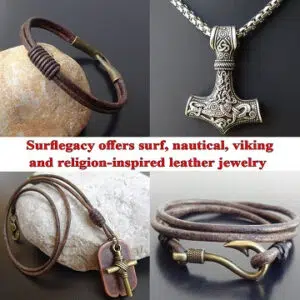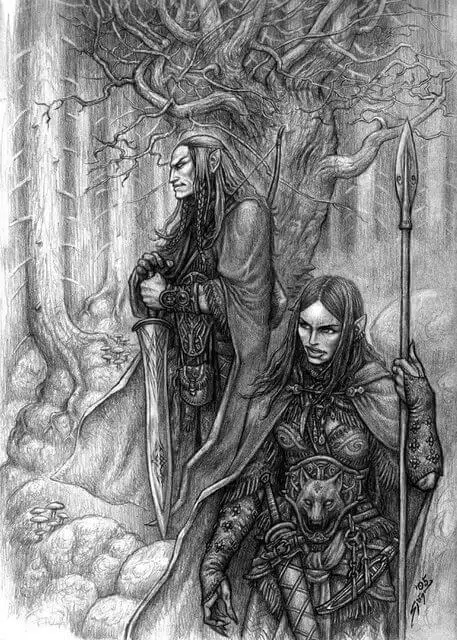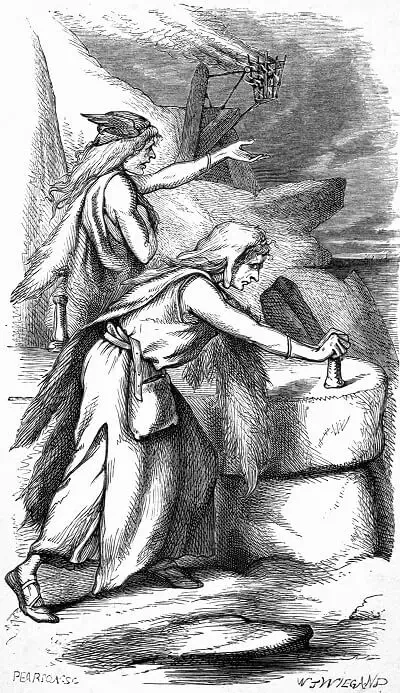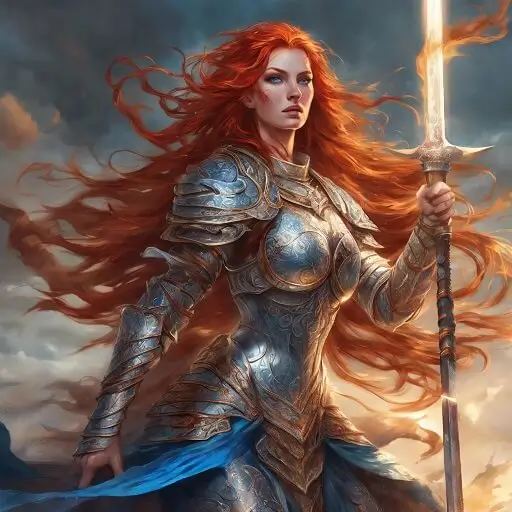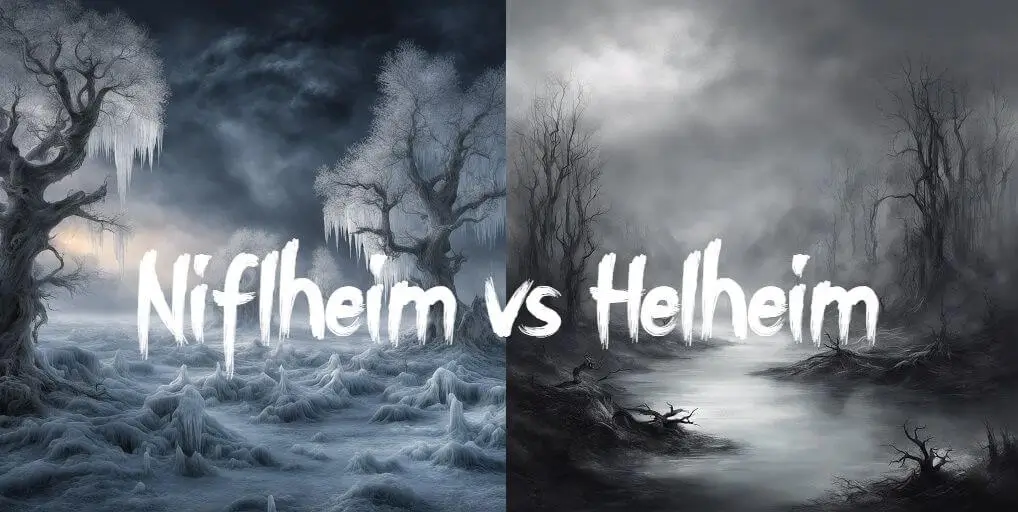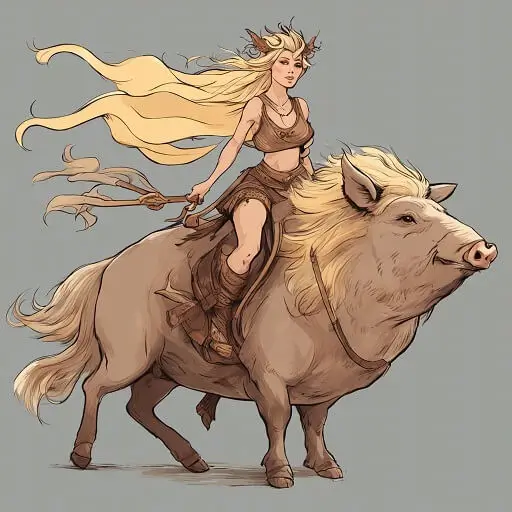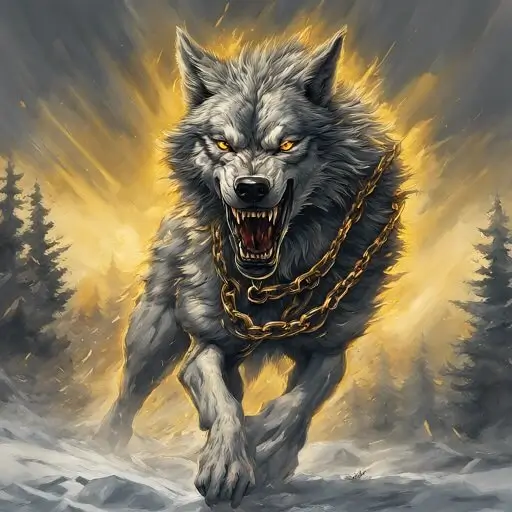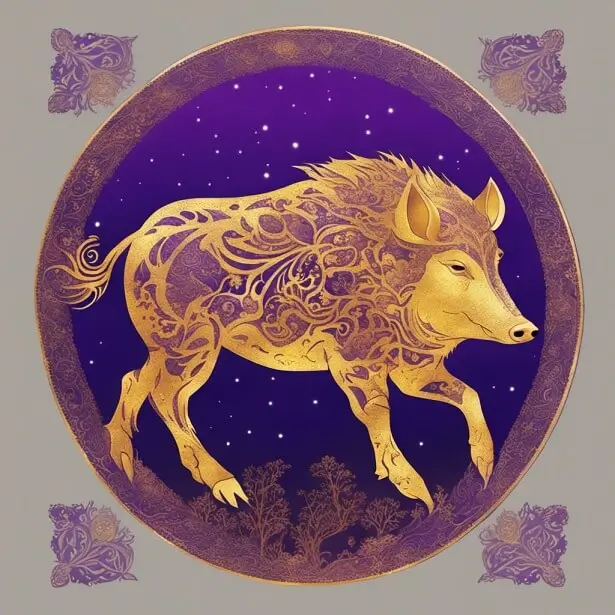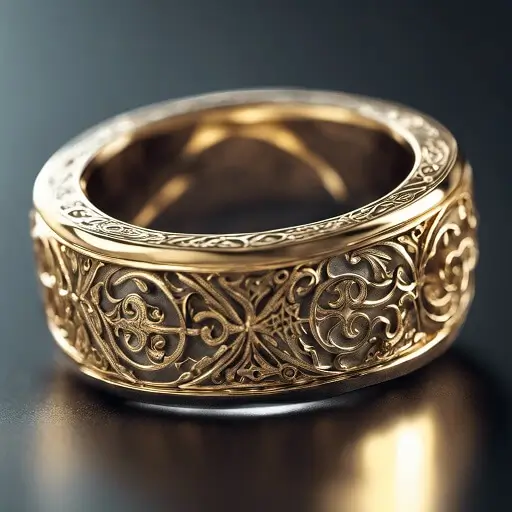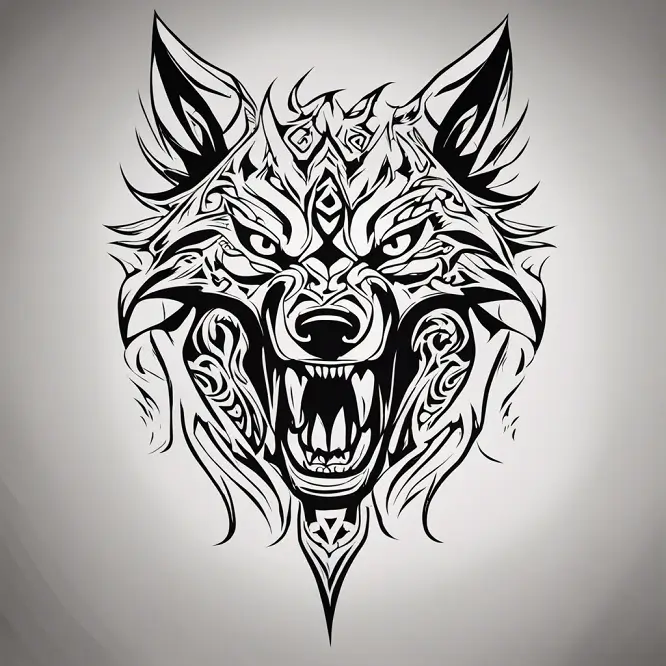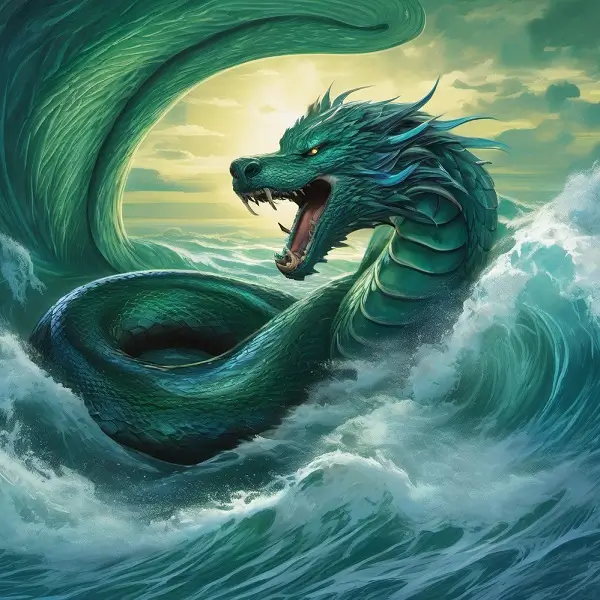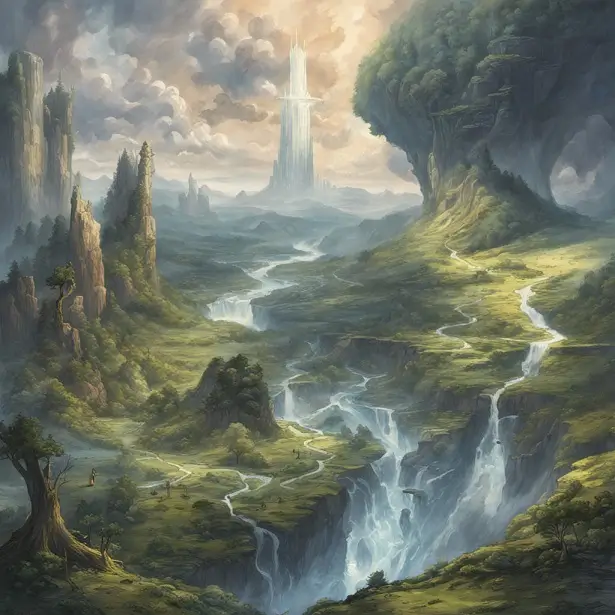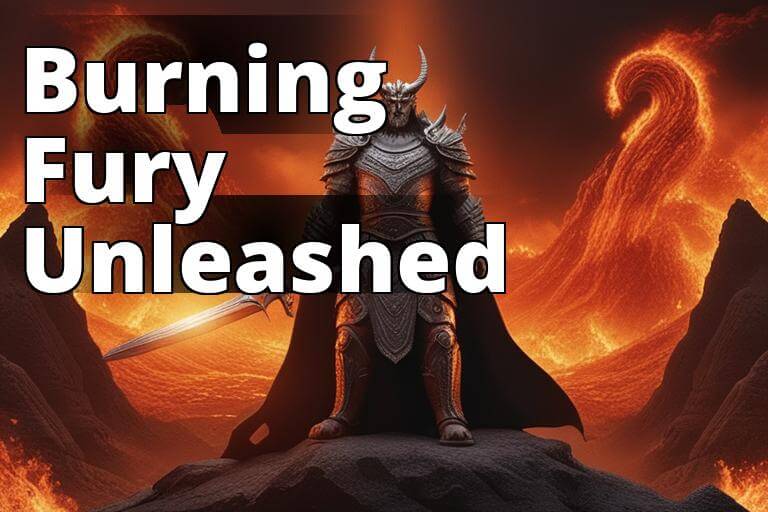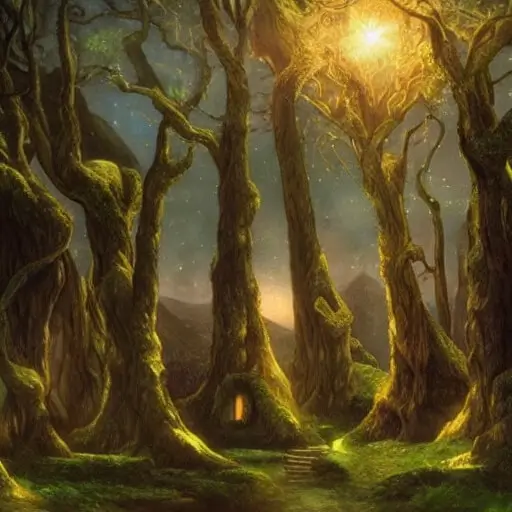Norse mythology is rich with stories of powerful gods, heroic warriors, and fearsome monsters. But among all the beings that populate these tales, the dark elves are some of the most intriguing.
These shadowy creatures dwell in underground caves and lurk in the darkest corners of the world. They are often portrayed as positively malevolent beings, who enjoy causing mischief and harming mortals. Is it true? Let’s find out!
Origins Of Elves In Norse Mythology
The Elves, who were described as tall, slender demi-gods with pale skin and hair and fairer than the sun, were said to live in Alfheim, a realm ruled by the God Freyr.
Elves are related to all of the gods, but Freyr is particularly close to them. When he was accepted into the Aesir he got sovereignty over Alfheim (the land of the elves) as a gift.
This relationship between the elves and this deity of virility and abundance seems to corroborate the theory that elves were fertility spirits embodying natural forces.
In general, Elves stayed out of human concerns, showing up on rare occasions to either spread disease or remedy it. They were a gender-bending race that did not conform to conventional ideas of sexuality. In popular culture, elves often played a morally ambivalent role.
According to certain accounts, there are two distinct kinds of elves: the Dokkálfar who are described as being “darker than pitch,” and the Ljósálfar, who are described as being “lighter than the sun.”
Snorri Sturluson, a medieval Icelander who wrote The Prose Edda, says that they came out of the flesh of the first giant Ymir like maggots, and then the gods gave them intellect.
They can live in rocks or in the ground. In the short story “Sörla þáttr,” the goddess Freyja sleeps with some dwarves in exchange for a beautiful collar. The dwarves live in rocks or likely caves, according to the story.
Snorri says that there are light elves who live in a beautiful place called Alfheim and dark elves (svartálfar) who live in the ground and might be the same as or related to dwarves. This makes things even more confusing.
In the poem Fáfnismál from the Poetic Edda, the dragon that the legendary hero Sigurd killed says that some of the Norns, the gods who can tell the future and decide what will happen to everyone, come from the family of Dvalin.
Most dvergr, on the other hand, are men. Some of them change into animals, like Fafnir from the legend of the clan of the Volsungs (which is part of the continental cycle of Nibelungs), Andvari, who lives like a fish, and Otr, whose name means “otter” in English, from the same story.
Dökkálfar and Ljósálfar
They are also called light and dark elves
The light elves live (Ljósálfar) in Alfheimr, which is considered the elves’ realm, and according to most Icelandic literary sources, the light elves are more beautiful than the sun to look.
The dark elves (Dökkálfar) on the other hand, have an extremely dark complexion and live underground in a wet and dirty place.
The two elf races have the capacity to travel through the air, although their methods of flight vary. Dark elves have membrane wings that they use to fly around their world, while light elves can levitate.
Attestations
The Ljósálfar and Dökkálfar are mentioned in Snorri Sturluson’s Prose Edda, as well as in the late Old Norse poetry Hrafnagaldr Óðins.
Since the idea is only mentioned in these 2 poems, it is unknown if Snorri came up with the idea of differentiating the two kinds of elves or whether he was only repeating a notion that had previously been created.
Snorri Sturluson mentions them in Gylfaginning 17
Hár segir: “Margir staðir eru þar gǫfugligir. Sá er einn staðr þar er kallaðr er Álfheimr. Þar byggir fólk þat er Ljósálfar heita, en Døkkálfar búa niðri í jǫrðu, ok eru þeir ólíkir sýnum ok miklu ólíkari reyndum. Ljósálfar eru fegri en sól sýnum, en Døkkálfar eru svartari biki. Þar er enn sá staðr er Breiðablik er kallaðr, ok er engi þar fegri staðr.
Said Hár, “There are many great places. There is a place called Álfheimr, where beings called the Ljósálfar (Light Elves) dwell; below ground, however, dwell the Døkkálfar, who are dissimilar to the former in appearance, but even more so in reality. The Ljósálfar are in appearance more beautiful than the sun, while the Døkkálfar (Dark Elves )are blacker than pitch.
Hrafnagaldr Óðins stanza 25
Through earth’s great
Gates of the north,
Beneath the outer root
Of the ancient tree,
To rest now glided
Giantesses and giants,
Ghosts and dwarfs,
And dark-alfs.
Who Were Dark Elves in Norse Myth?
In Norse cosmology, svartálfar or black elves, also known as myrkálfar, is a race of elves
They were said to live in the realm of Svartalfheim, which was one of the nine realms of the Norse cosmos. The dark elves were said to be skilled in magic and illusion, and they are variously referred to as svartálfar, dökkálfar or døkkálfar (the latter two meaning, respectively, “dark elves” and “dark alfs”).
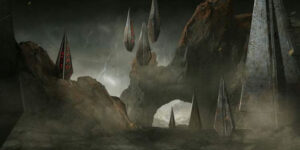
Svartalfheim
The dark elves are said to be “dark and grim” in appearance, and they are associated with death, darkness, and decay.
Where do Dark Elves live?
They dwell in the realm of Svartalfheim, one of the Nine Worlds of the cosmology of Norse mythology.
However, they would often emerge from the shadows at night to lie on sleeping people’s chests, causing nightmares. Their skin had become black from dwelling near subterranean forges.
Alfheim is the term used in the old Eddic poems. Svartalfheim is only found in Snorri’s Edda, as a home of dark elves or dwarves.
Are Dark Elves Evil In Norse Mythology?
No, the Dark Elves are just another name for dwarves. Most people refer to Light Elves as “elves.”
Dwarves in Norse mythology were not always bad, they were similar to the dwarves in Lord of the Rings (in fact, Tolkien was inspired by Norse mythology).
They lived below and were well-known drinkers and metalworkers. They created Sif‘s golden hair when Loki chopped it off, both chains used to tie Fenrir the wolf, and a plethora of other metal artifacts for the gods to utilize.
Did Vikings Believe In Elves?
The short answer is yes, Vikings did believe in elves.
The belief in elves was widespread in Viking society and they were thought to be real, physical beings. There are many references to elves in Viking literature and they were considered to be an important part of Norse mythology. Several dwarfs are mentioned by name in the Eddic poetry Vǫluspá. According to the Hávamál , knowing the names of the dwarfs is a sign of intelligence and is useful in some manner (perhaps to invoke them in magic spells).
Dwarves created nearly all of the gods’ weapons and specialty tools
Thor’s hammer (Mjolnir) was forged by Eitri and the Dwarves of Nidavellir.
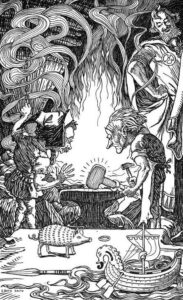
The dwarven sons of Ivaldi forge the hammer Mjolnir for the god Thor (Elmer Boyd Smith 1902)
The spear of Odin Gungnir, which never missed its target, and his magical arm ring Draupnir were made by the Ivaldi dwarves.
Other examples are Sif’s living gold hair, Freyr’s magical ship Skidbladnir (which can shrink down to pocket size), golden boar Gullinborsti, Freyja‘s amber necklace Brisingamen,
Elves were generally seen as benevolent creatures, but they could also be dangerous if provoked. They were often associated with nature and the natural world, they believed that these creatures resided in the forests and mountains, and they were thought to be able to help or harm people depending on their mood.
Viking beliefs about elves were probably influenced by the beliefs of other Germanic peoples, as well as by contact with other cultures (such as the Celts) who also believed in elves.
It is likely that the belief in elves was originally a pagan belief, but it was also adopted by Christians in Scandinavia. This is evident from the fact that there are many references to elves in Old Norse literature, which was written down after the arrival of Christianity in Scandinavia.
Dwarves figure in numerous major legends, and are often depicted as greedy, vindictive, and malicious
In the story, Fafnir was a dwarf who was transformed into a dragon after he killed his father for a treasure. The story tells of how the dragon was slain by the hero Sigurd, who took the treasure for himself.
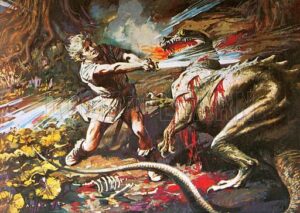
Sigurd against Fafnir
Kvasir was a peaceful and wise being, respected and loved by all who knew him, he was assassinated by 2 dwarves who mingled his blood with honey to create Poetry Mead. Because Kvasir was their guest at the time, their act was made much more horrible by breaching the Norse hospitality taboo.
Vikings thought that encountering a dwarf may result in magnificent weapons or magical riches, but it could also result in death and misfortune.
Dark Elves in Pop Culture
Elves in modern culture are mostly based on how J. R. R. Tolkien described them in The Lord of the Rings: tall, human-like creatures with beauty from another world who have their own Kings and Queens. Along with this change.
Dark elves are often pictured as a more evil version of High elves, like the Drow or the Trow, which are dark creatures in Orcadian and Shetland folklore that look like fairies.
They have just lately made their way into pop culture. They appeared in Thor: The Dark World in 2013 and are included in God of War, the latest entry of the video game franchise.
In the turn-based strategy game Age of Wonders, the Dark Elves are a kind of Elf, yet they qualify as their own race due to their evil alignment.
According to the game, all Dark Elves were once ordinary elves, but since elves are eternal, they suffer not physical death, but spiritual death. It is never mentioned why their spirit dies, and Prince Meandor is the only Main Character who experiences such ‘death.’ Drow feature in Atari’s Demon Stone as well.
Conclusion
In conclusion, it can be said that dark elves are an important part of Norse mythology. They are often associated with death and darkness, but they can also be associated with beauty and grace. They are creatures that are both feared and revered, and they continue to fascinate people to this day.
Shop Viking Jewelry
Are passionate about Norse Mythology?
Finding the ideal piece of Norse Jewelry can be challenging and time-consuming, especially if you lack inspiration or don’t know where to look.
Surflegacy, has you covered. We have a wide range of Handmade Jewelry in various styles, shapes, colors, and materials, to accentuate your Norse spirit and look. Do not hesitate to visit our selection HERE
Whatever you wear, you’ll find the ideal trendy piece to complement your wardrobe. Our jewelry is designed to be worn every day, no matter where you go or what season is. Are you ready to step up your wardrobe game?
